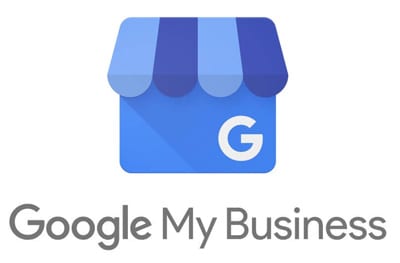Did you know that four out of five consumers use a search engine to find local information? Research from Google also shows that local searches lead to more purchases than non-local searches with 50% of consumers who conduct a local search on their smartphone visiting a store within a day. Statistics like these make it clear that local SEO is vital for small businesses that want to drive more relevant local traffic to their store.
Local search engine optimization is the process of optimizing your site and content for search engines like Google. Though many of the tactics are similar to standard search engine optimization practices, there are some specific local SEO tactics that will help you get your brand in front of local consumers who are looking for brands like yours on the search engines. This enables your business to boost online traffic within your company’s local area and drive more sales.
Below, we’ve put together 3 top tips for improving your local SEO and attracting more qualified buyers to your business:
1. Develop locally focused content.

Just as quality, relevant content is an important part of improving search engine optimization, locally focused content is vital to helping you boost local SEO. By regularly creating and publishing content that is specific to your area and the challenges that local customers face, you can work to engage and educate local consumers who are looking for brands like yours.
For example, take a look at the photo above. While it might just be cute to some, it holds significance for our local audience here in the Monterey Bay area. Many of our local customers do their part to help protect and preserve our marine life sanctuary and content like this (even something as simple as a photo) can help you connect and resonate with your local target audience.
Not only does locally-focused content improve your chances of appearing higher in the search engines, but it also allows you to build industry authority and foster relationships with local consumers.
The best place to get started is with a brand blog. You’ll want to create content that is specific to your business and your customers’ challenges while also addressing issues, concerns, or interests that are relevant to your town. By sharing your passion and expertise, you can work to connect with local consumers while also showing up for local searches about these topics. Keep in mind, people gravitate towards those who aim to help, not those who are selling. Develop useful, engaging, and helpful content that solves your customer’s problems.
Your goal is to create content for consumers, not search engines. However, if you want consumers to be able to find you online, then it’s worthwhile to perform some local keyword research. This is the process of finding out which keywords consumers are using to find local brands like yours or what they are searching for that relates to your business and industry. Use Google Keyword Planner to find out which relevant keywords local customers are using in the search engines.
2. Create listings for your business on online directories.

When it comes to local search engine marketing, it’s important to make sure that your business is present and optimized on as many relevant online directories as possible. This helps improve brand awareness within your geographic area while also ensuring that consumers know how to get to your store or contact your business when they’re ready.
 The best place to start is with Google My Business. Claiming your GMB listing and ensuring that this listing is accurate helps improve your visibility on Google while allowing you to manage how your business appears on Google Maps. In addition to Google, you’ll want to make sure that you’ve also creating listings on other major directory and map sites like Yelp, Bing Local, Yahoo Local, Yellowpages.com, Superpages.com, Citysearch, Facebook, Twitter, and other popular directories or sites that local consumers might use to find the brands they need.
The best place to start is with Google My Business. Claiming your GMB listing and ensuring that this listing is accurate helps improve your visibility on Google while allowing you to manage how your business appears on Google Maps. In addition to Google, you’ll want to make sure that you’ve also creating listings on other major directory and map sites like Yelp, Bing Local, Yahoo Local, Yellowpages.com, Superpages.com, Citysearch, Facebook, Twitter, and other popular directories or sites that local consumers might use to find the brands they need.
Manually finding and listing your business on a variety of directories and databases can certainly be a hassle. Not to mention, you may not even know about all of the opportunities to list your business online. This is where a tool like Yext comes in. Yext is a service that can help list your business on different local directory and database sites like Yelp and Citysearch and clean up any listings that include outdated and incorrect information. Rather than having you manually list your business, Yext streamlines the process, automatically listing the information across these sites to help build brand awareness, increase authority, and boost local search traffic.
3. Make sure that your NAP is consistent across online properties.

If you want to rank well on the search engines, it’s essential that your business information is accurate across the web. Just imagine if your business address was not correct online and someone tried to drive to your location. Do you think they would remain a happy customer if they wasted their time driving to the wrong location?
We’ve already talked about the importance of creating local directory listings for your brand. But you need to go one step further to make sure that your NAP (Name, Address, Phone Number) and any other information like your website is consistent across these listings and any other online properties like social media profiles and mentions on other sites. Search engines crawl all of these directories to verify your business data. Therefore, your accurate business data will allow search engines to give your business a boost in authority and credibility in local search.
Your NAP plays a vital role in helping local customers find and visit your physical business location(s). If your contact and address information is inconsistent online, this could cause you to lose out on the opportunity to bring new traffic into your store. Not only does this information confuse the search engines, resulting in lower rankings on the search engine results page, but it also confuses consumers, which should never be your goal.
In addition to helping you get listed on local directories, Yext is also a tool that can help you check your data consistency across many different directories, databases, and social media platforms and alert you when something needs to be fixed. This is a great way to monitor your business information across sites without manually checking to make sure that your NAP is correct in all of the places you are listed on across the web.
Get Started with Local SEO to Boost Local Traffic

Ultimately, local SEO will play a significant role in helping you reach more local customers online and get them lining up at your door. The simple tips mentioned above are a great starting point for helping you rank higher in local searches and drive more quality local leads to your business.
So what are you waiting for? It’s time to start growing your local business!
As a Yext certified partner agency, Vinci Digital focuses on helping small businesses improve their local citations to build better local visibility. To learn more, check out our local SEO and business listing services or give us a call to get started: (877) 693-4695 or contact us online. You can also see how your local listings stack up by using the search below. Simply enter your business information into the search and instantly see how your business information stacks up across most of the major directories.











